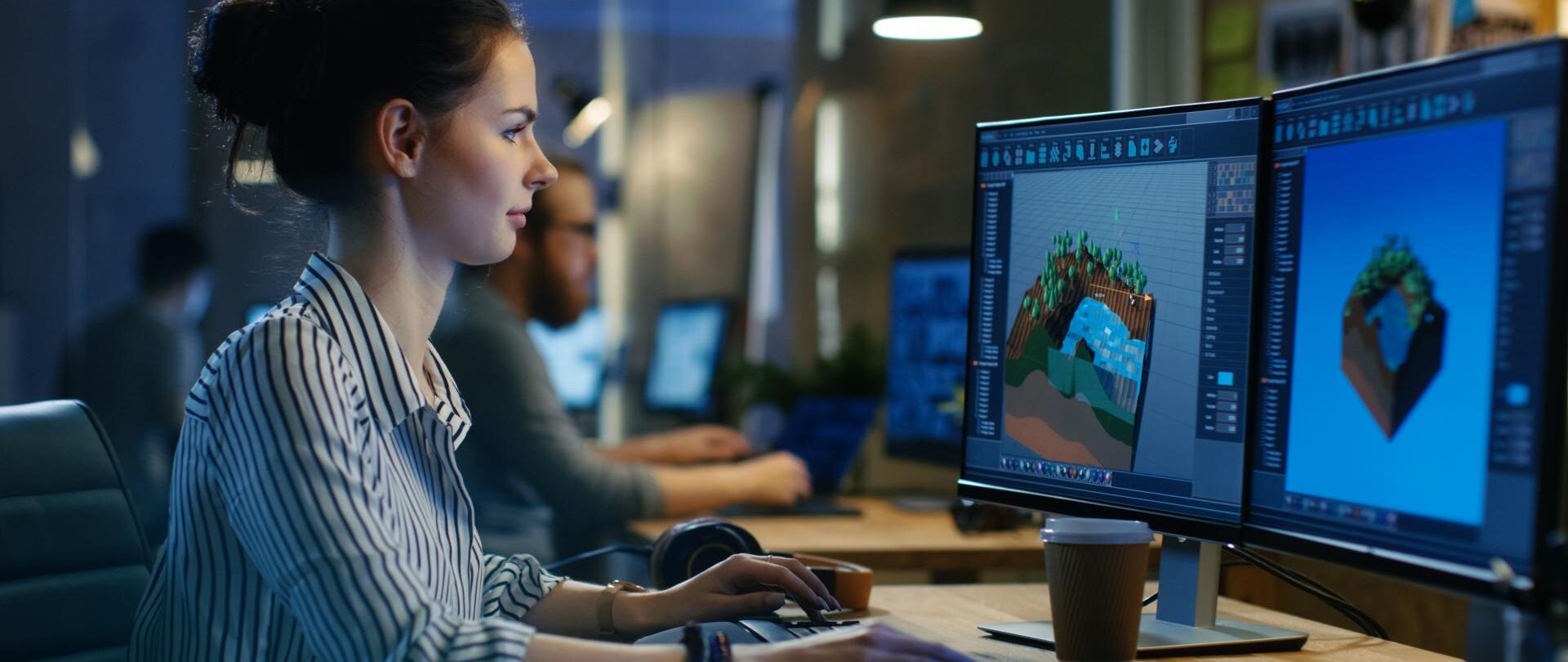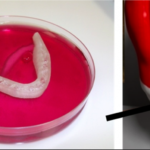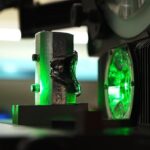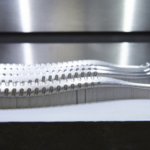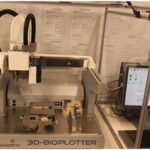
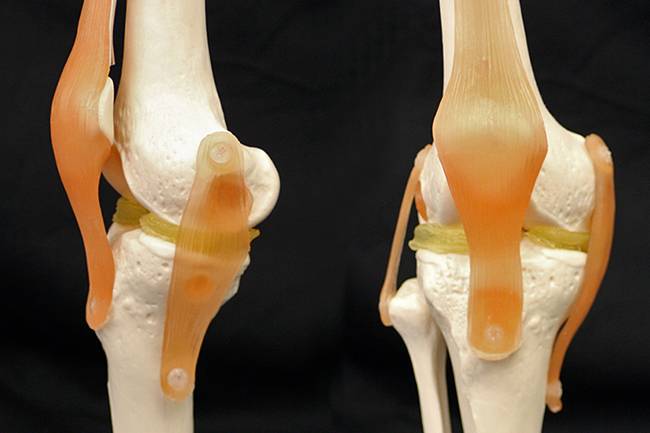
Except when they made me in gym class, I didn’t play sports in high school or college (does badminton class count?). But I had friends who were far more athletically inclined, and every once in a while, someone would have to take time off from school due to that dreaded sports injury: the torn ACL, or the torn meniscus. Menisci are basically shock absorbers, made of cartilage, for the human knee. While sports injuries can often cause the cartilage to tear, sometimes even a wrong step can painfully damage the menisci, and the person can have an increased risk of getting arthritis later in life. The meniscus has a more difficult time healing on its own after a person reaches adulthood, and while surgeons do their best to repair the damaged or torn cartilage, it often has to be removed instead. There are implants available, but they are not a perfect solution: the implants either aren’t biocompatible, or don’t match the elasticity and strength of the original.
However, there is hope: researchers at Duke University have created a cartilage-mimicking, 3D printable material that could potentially help surgeons 3D print customized, patient-specific replacement knee parts. Biocompatible materials called hydrogels have a molecular structure very similar to that of cartilage: a web made of long string-like molecules, with water molecules filling the gaps. However, the issue is that synthetic hydrogels are not always equally as strong as human cartilage, and they are difficult to 3D print.
Benjamin Wiley, an associate professor of chemistry at Duke University, explained, “The current gels that are available are really not as strong as human tissues, and generally, when they come out of a printer nozzle they don’t stay put — they will run all over the place, because they are mostly water.”
But the researchers developed a hydrogel-based material that is not only 3D printable, but also matches the elasticity and strength of human cartilage, and can remain stable inside the body. The team used a $300 3D printer to manufacture menisci for a plastic knee model. The results of their research were recently published in a paper, titled “3D Printing of a Double Network Hydrogel with a Compression Strength and Elastic Modulus Greater than those of Cartilage,” in ACS Biomaterials Science and Engineering; co-authors include Wiley, graduate student Feichen Yang, and undergraduate student Vaibhav Tadepalli.
Wiley explained, “We’ve made it very easy now for anyone to print something that is pretty close in its mechanical properties to cartilage, in a relatively simple and inexpensive process.”
Yang mixed together a soft, stretchy hydrogel with a strong, stiff one, to create what’s known as a double-network hydrogel. He experimented with the relative amounts, and discovered that he was able to change the elasticity and strength to achieve a formula that closely matches human cartilage.
“The two networks are woven into each other. And that makes the whole material extremely strong,” explained Yang.

To make the cartilage-mimicking material 3D printable, Yang also added a nanoparticle clay, which allowed the hydrogel to flow, just like water, when under shear stress; i.e., while being squeezed through a needle during the 3D printing process. The hydrogel will immediately harden into its printed shape once it’s removed from the stress.
This isn’t the first time we’ve seen a 3D printed meniscus implant, but that process required a 3D printed scaffold, in the shape of a healthy meniscus, and was 3D printed using a biodegradable polymer. What both processes have in common are the fact that the custom implants are based on virtual 3D models of a patient’s knees, created using CT or MRI scans. Yang took a CT scan of a plastic knee model for this research, and used the data to 3D print new menisci with his innovative double network hydrogel; the whole thing only took one day.
Wiley explained, “This is really a young field, just starting out. I hope that demonstrating the ease with which this can be done will help get a lot of other people interested in making more realistic printable hydrogels with mechanical properties that are even closer to human tissue.”
The research team explained that 3D printing could further benefit meniscus implants thanks to its “ability to create customized and complex shapes.”
“Shape is a huge deal for the meniscus. This thing is under a lot of pressure, and if it doesn’t fit you perfectly it could potentially slide out, or be debilitating or painful,” Wiley said.
Yang agreed, explaining that knee cartilage is heterogeneous, or possessing very dissimilar elements.
“The middle is stiffer, and the outside is a bit softer,” Yang said. “Multi-material 3-D printers let you print different materials in different layers, but with a traditional mold you can only use one material.”
The team’s research was supported by grants from the National Science Foundation and Duke University startup funds. Discuss in the Duke University forum at 3DPB.com.
[Source: Duke University]
If you're looking for affordable 3D visualization services in the USA, our platform provides an ideal solution for all your architectural and real estate needs. Through our service, you can access high-quality 3D renderings at competitive prices without compromising on quality. Whether you need interior visualizations, exterior renderings, or architectural animations, our team ensures that you get professional results that fit within your budget. With our support, you can make your projects visually stunning while saving on costs, all with a quick and straightforward process.
Through our site, you can easily order affordable 3D visualizations for your projects, whether for a residential property, commercial development, or architectural design. We understand the importance of staying within budget, and that's why we offer tailored solutions to ensure you get the best value for your investment. Our experts work efficiently to provide you with realistic, photorealistic 3D images that will elevate your presentations and attract clients, making your property stand out in the market.

